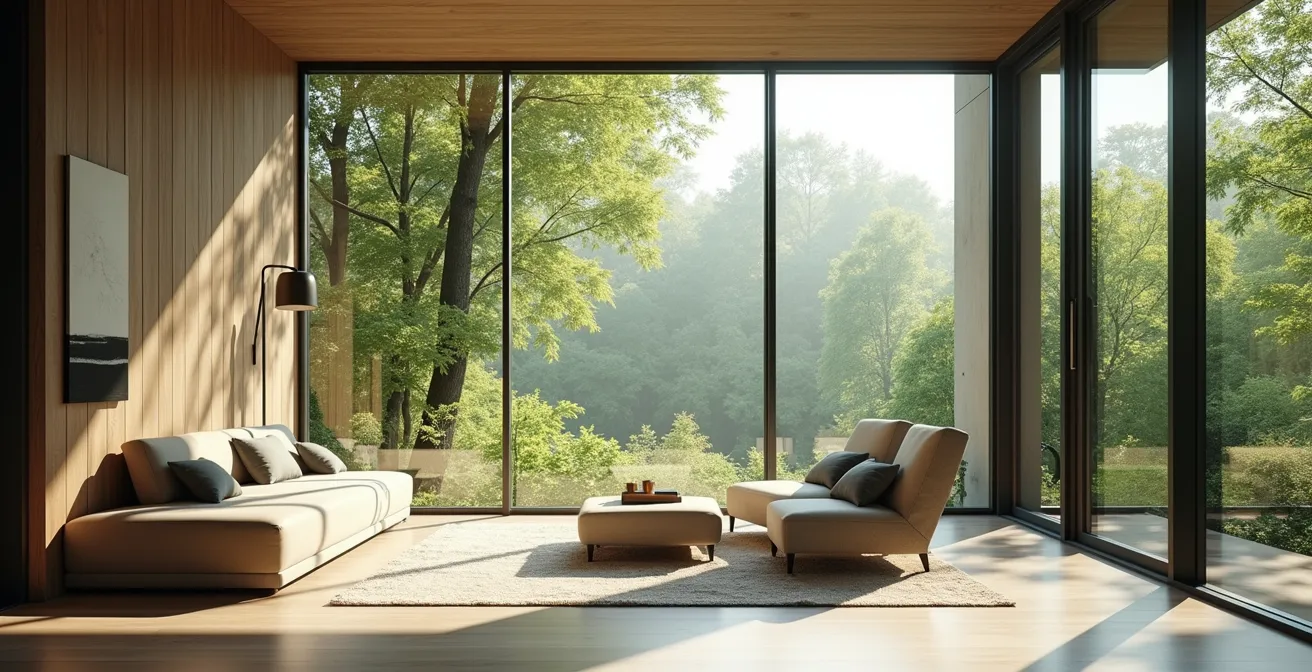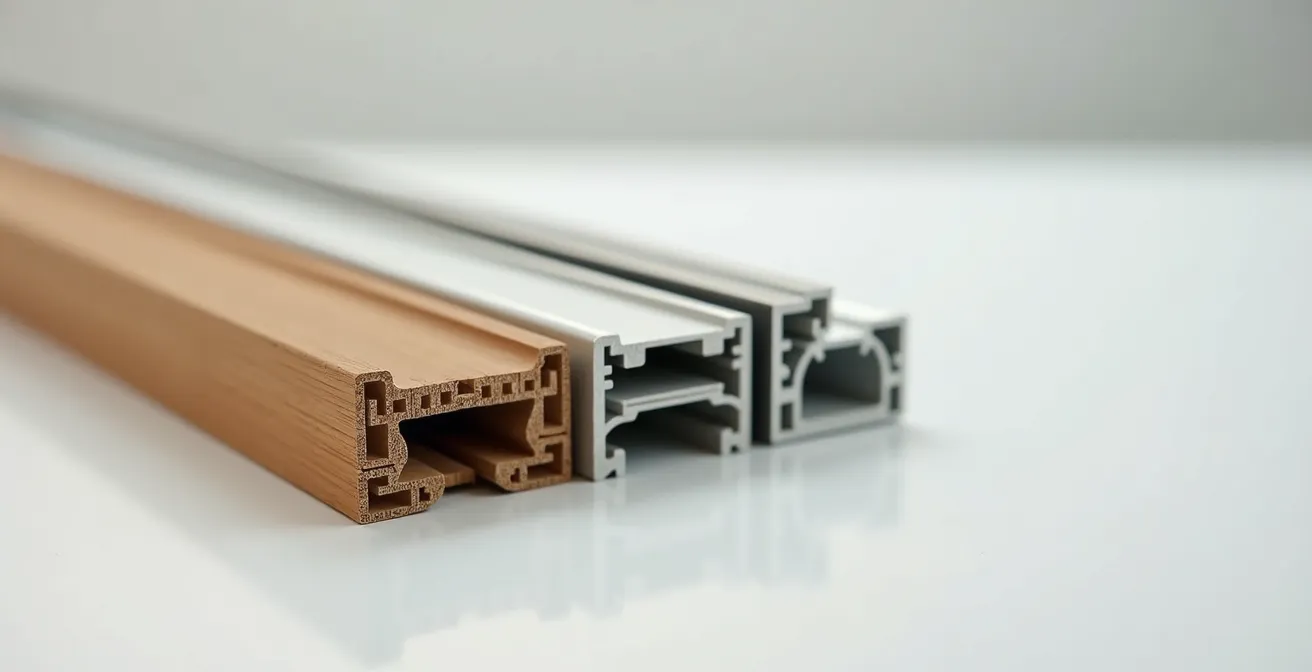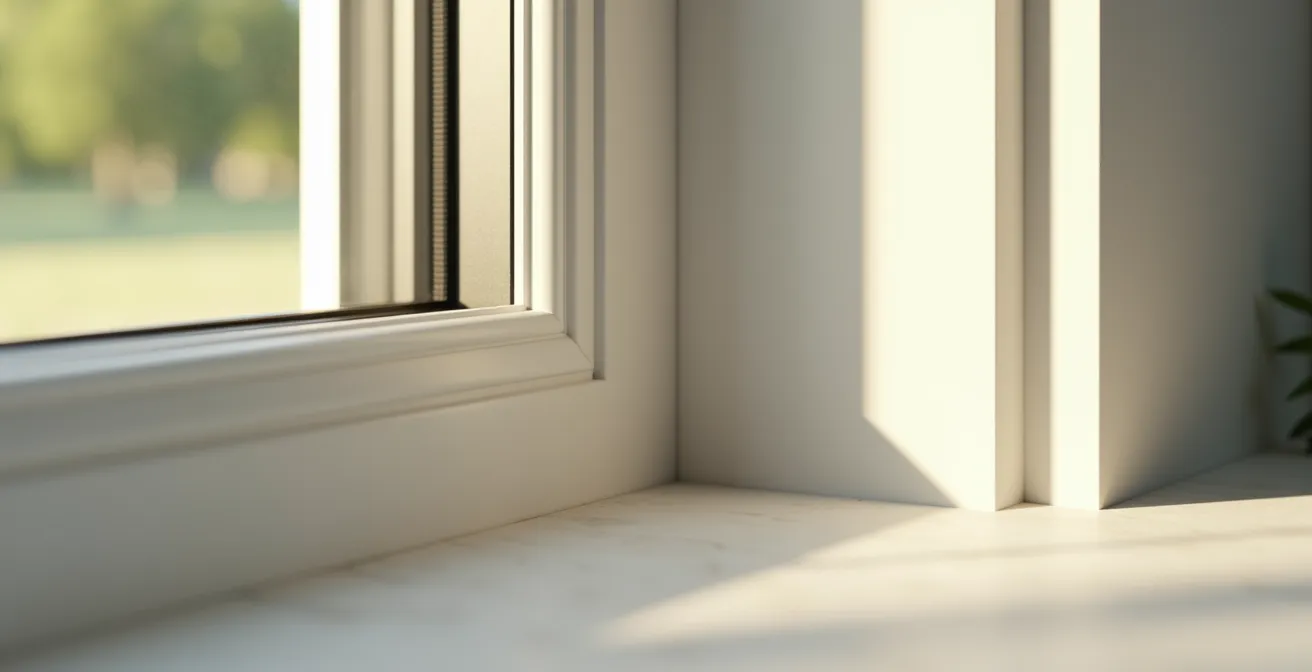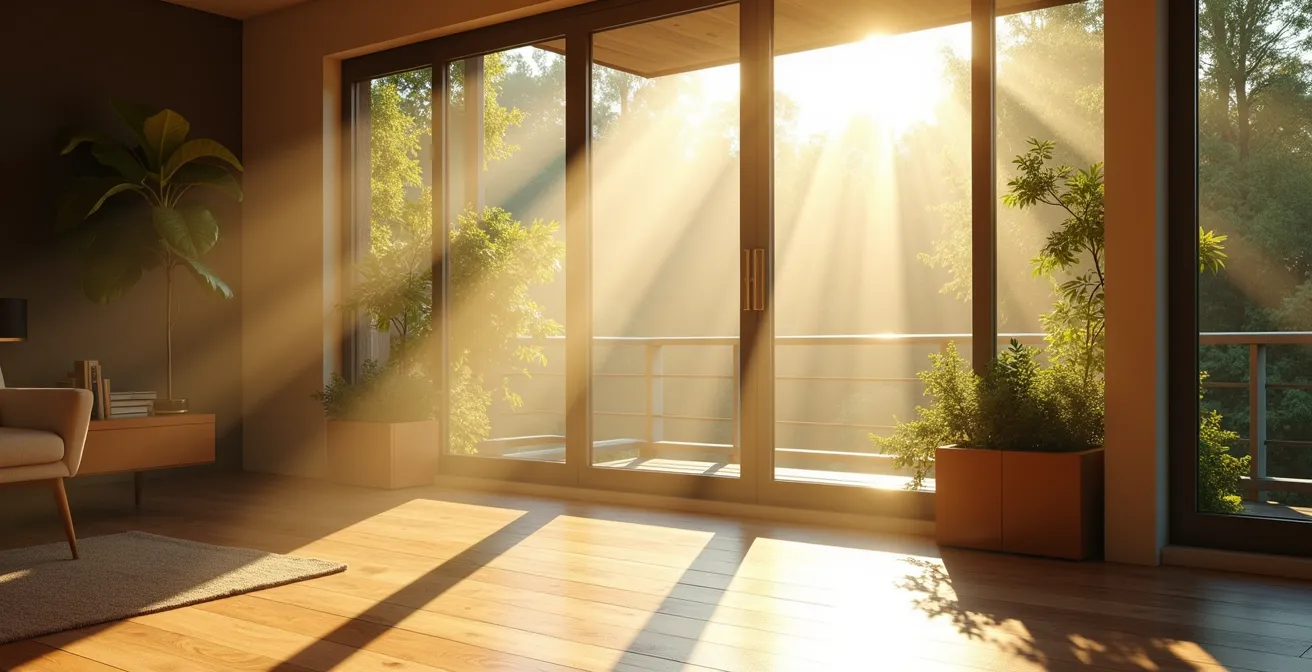
When considering sustainable home upgrades, windows are often viewed through a narrow lens: energy savings. While lower utility bills are a significant benefit, this perspective misses the bigger picture. True sustainability in a window is not just a feature—it is a comprehensive outcome determined by its material origins, the precision of its installation, and its long-term contribution to both your finances and your well-being. Understanding this complete equation is key to making a truly impactful investment.
Choosing the right windows involves looking beyond a simple energy rating and evaluating how each component contributes to a healthier, more valuable, and resilient home. From the embodied energy in their frames to their ability to connect us with the natural world, modern windows are a cornerstone of holistic home sustainability. For those looking to make an informed decision, exploring options from specialists like Ravenwindows.com can provide a clear path forward.
The Core Equation for Sustainable Windows
- Material Lifecycle: True sustainability begins with the raw materials, considering their sourcing, durability, and end-of-life options.
- Installation Quality: A window’s potential is only realized through expert installation that eliminates leaks and ensures peak performance.
- Holistic Returns: The value extends beyond energy savings to include increased property value, improved health, and enhanced daily comfort.
Beyond the glass: Evaluating the environmental lifecycle of window materials
The journey to a sustainable window begins long before it is installed in your home. The choice of material for the frame and sash has profound environmental implications, from manufacturing to disposal. A holistic assessment requires comparing the embodied energy—the total energy consumed to produce a material—against the operational energy savings the window will provide over its lifetime. Materials like wood, vinyl, fiberglass, and aluminum each present a different balance of upfront environmental cost versus long-term efficiency.
Furthermore, true sustainability accounts for durability and end-of-life options. A window that lasts for decades and can be recycled or repurposed has a significantly smaller environmental footprint than one destined for a landfill. Considering an overview of sustainable window materials helps frame this choice, with options ranging from recycled aluminum and sustainably sourced wood to advanced composite materials. Ethical sourcing, particularly for wood, ensures that the material choice aligns with responsible forestry and broader eco-friendly principles, ultimately impacting the health of both the planet and your home.
Eco-Friendly Timber Windows with Sustainable Sourcing
This study highlights timber windows as renewable, biodegradable options providing natural insulation, with FSC-certified sustainable forestry practices ensuring minimal environmental impact.
The visual contrast between different materials underscores their unique properties. The warm, organic grain of wood speaks to its natural origins, while the sleek finish of aluminum or the resilient texture of fiberglass highlights different manufacturing processes and performance characteristics.

Ultimately, selecting a window material is about more than just aesthetics or initial cost. It is a decision that locks in an environmental impact for decades. By analyzing the complete lifecycle, homeowners can make a choice that genuinely supports their long-term sustainability goals.
The unseen architect of efficiency: Why installation quality is paramount
Even the most technologically advanced, energy-efficient window will fail to deliver on its promise if installed improperly. The quality of the installation is the invisible factor that dictates a window’s real-world performance. Improper sealing, poor fitting, and inadequate insulation can create drafts, allow moisture intrusion, and cause thermal bridging—a phenomenon where heat bypasses the window’s insulation through the frame, negating its efficiency.
Studies have shown that professional installation can enhance window performance up to 30%, directly impacting your home’s comfort and energy consumption. This critical step ensures that there are no gaps or leaks that compromise the building envelope. Moreover, manufacturers’ warranties are often contingent on adherence to strict installation standards, making professional installation a crucial part of protecting your investment.
Why does window installation quality matter so much?
Because even the most energy-efficient window will fail if installed incorrectly. Proper installation prevents air leaks, moisture damage, and thermal bridging, ensuring the window delivers its promised performance and longevity.
“A window can only perform well if properly installed.”
– Industry Expert, HeatWise HVAC, HeatWise HVAC Blog
The details of a quality installation are what separate a high-performing window from a source of energy loss. A perfectly applied sealant, a snug fit within the rough opening, and seamless integration with the home’s weather-resistant barrier are all hallmarks of superior craftsmanship.

To ensure you receive the full benefits of your new windows, it’s essential to partner with qualified installers who understand the nuances of the job. Verifying their credentials and understanding the key checkpoints of a quality installation can make all the difference.
Key Check Points for Quality Window Installation
- Ensure proper sealing and alignment of the window frame.
- Use appropriate insulation around window edges to prevent thermal bridging.
- Avoid gaps and air leaks to stop drafts and moisture intrusion.
- Verify adherence to manufacturer installation standards to preserve warranty.
Future-proofing your investment: Comprehensive financial returns of modern windows
The financial case for upgrading to modern windows extends far beyond a simple reduction in monthly energy bills. A comprehensive analysis reveals a multi-faceted return on investment (ROI) that impacts both short-term expenses and long-term property value. By improving your home’s thermal envelope, new windows reduce the strain on your HVAC system, potentially extending its lifespan and lowering maintenance costs.
From a real estate perspective, high-performance windows are a significant selling point, enhancing marketability and increasing property value. In fact, many homeowners see a return on investment for replacement windows around 70-80% upon resale. Beyond the direct financial gains, modern windows also mitigate costly issues like condensation damage to walls and sills and improve indoor air quality, which can reduce potential health-related expenses.
Financial Benefits of Window Upgrades Including Energy Savings and Property Value
Replacing vinyl windows leads to energy savings of up to 13% on heating/cooling bills and increases home value with an average ROI of 67.1%, enhancing both financial and comfort aspects.
To maximize these financial benefits, homeowners should strategically leverage available incentives. Federal tax credits, state-level rebates, and even local grants can significantly reduce the upfront cost of a window replacement project, accelerating the payback period and amplifying the overall ROI.
| Incentive Type | Description | Region |
|---|---|---|
| Federal Tax Credits | Up to 30% credit for energy-efficient windows | USA |
| State Rebates | Varied rebates based on energy saved | Various US States |
| Local Incentives | Additional rebates or grants for sustainable upgrades | Municipalities |
Creating sustainable sanctuaries: Windows as enhancers of well-being and connection
Beyond their technical performance and financial benefits, modern windows play a vital role in shaping the living environment. They are the primary medium through which our homes connect with the outside world, and this connection profoundly impacts our well-being. Advanced glazing technologies, such as multi-pane glass and Low-E coatings, are central to creating this comfortable sanctuary. These features optimize natural light while controlling solar heat gain and blocking harmful UV rays, leading to an up to 30% reduction in heat transfer.
This careful management of natural light is a core principle of biophilic design, an approach that seeks to connect building occupants more closely with nature. Maximized daylight and views have been psychologically proven to reduce stress, improve focus, and enhance overall health.
Natural light in buildings improves productivity, wellbeing, and regulates circadian rhythms, essential for biophilic design.
– Rebecca Clayton, IQ Glass
A serene indoor atmosphere is also dependent on acoustic insulation. High-performance windows can significantly reduce exterior noise, creating a tranquil space for rest and concentration. The right windows transform a house into a home—a place where sunlight is welcomed without compromising comfort, and the outside world can be appreciated in peace. The ability to enhance home sustainability with modern windows is about creating this balanced, healthy environment.

As window technology continues to evolve with innovations like dynamic tinting and integrated smart sensors, our ability to create adaptive, responsive living spaces will only grow. These advancements further solidify the role of windows as a key component in a truly sustainable home, one that nurtures its inhabitants as much as it protects the environment. For those looking to take the next step, you can Explore more emission reduction strategies to complement your home upgrades.
Key Takeaways
- True window sustainability considers the entire lifecycle, from material sourcing and embodied energy to recyclability.
- The quality of installation is paramount and can impact a window’s energy performance by up to 30%.
- The financial return on new windows includes energy savings, increased property value, and reduced maintenance costs.
- Modern windows enhance well-being by optimizing natural light, reducing noise, and supporting biophilic design principles.
Frequently Asked Questions on Sustainable Home Improvement
What is the most sustainable window material?
There is no single “best” material, as the choice depends on your priorities. Sustainably sourced wood is renewable and a great insulator. Fiberglass is incredibly durable with low embodied energy. Recycled aluminum offers strength and is highly recyclable. The most sustainable choice considers the material’s entire lifecycle, durability, and regional climate.
Can I install new windows myself to save money?
While it may seem cost-effective, DIY installation is not recommended. Improper installation can lead to air leaks, water damage, and poor energy performance, negating the benefits of the new windows. Professional installation also ensures your manufacturer’s warranty remains valid.
Are expensive windows always a better investment?
Not necessarily. The best investment is a window that meets the specific energy efficiency needs of your climate and is installed correctly. A mid-range, well-installed window will outperform a premium window that is poorly fitted. Focus on key performance ratings like U-factor and SHGC relevant to your location.
What are Low-E coatings?
Low-E, or low-emissivity, coatings are microscopically thin, transparent layers of metal oxide applied to a window’s glass surface. This coating reflects infrared heat, keeping your home warmer in the winter by reflecting heat back inside and cooler in the summer by reflecting solar heat away.